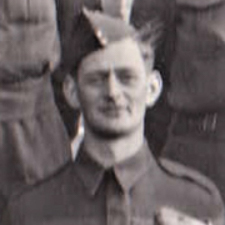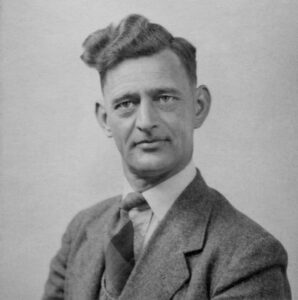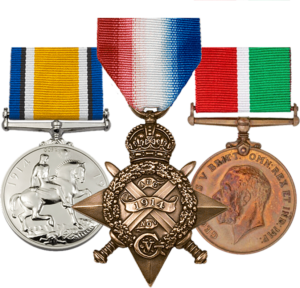George was conscripted into the Royal Marines during 1940, being ordered to report to the barracks at Plymouth on 28 February 1940. He was given service number EX/3965 and described as 5 feet 8 inches tall with brown hair, blue eyes, and a dark complexion with a large scare on his left knee.
After training he joined Mobile Naval Base Defence Organisation No. 1 (MNBDO1) in May 1940, which was formed for the defence of naval harbours against air attack. George did not deploy with them to Egypt however, instead moving to the newly formed MNBDO2 in January 1941. The unit remained at home for the next year, with George being promoted to Lance Corporal in December. Two months later he was posted to the Royal Marine Division where he served as a machine gun instructor, being promoted to Corporal in April 1943.
Deployment to Burma
In July 1943 George joined the Commandos, specifically 44 (Royal Marine) Commando. In November they were assigned to the 3rd Special Service Brigade alongside 1 Commando and 42 Commando, sailing together from Gourock on the River Clyde on 15 November, bound for Burma. They arrived in Bombay on 19 December after a five-week voyage and travelled by train to a camp at Kedgaon near Poona where a Combined Training Centre had been established to practice amphibious landing techniques.
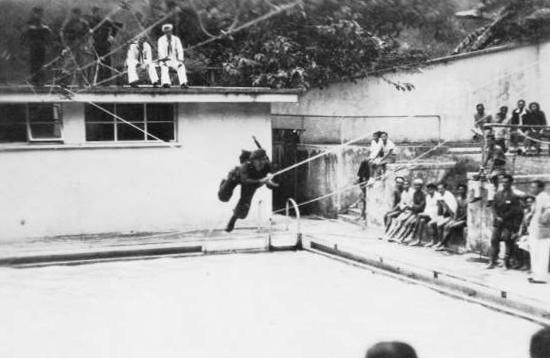
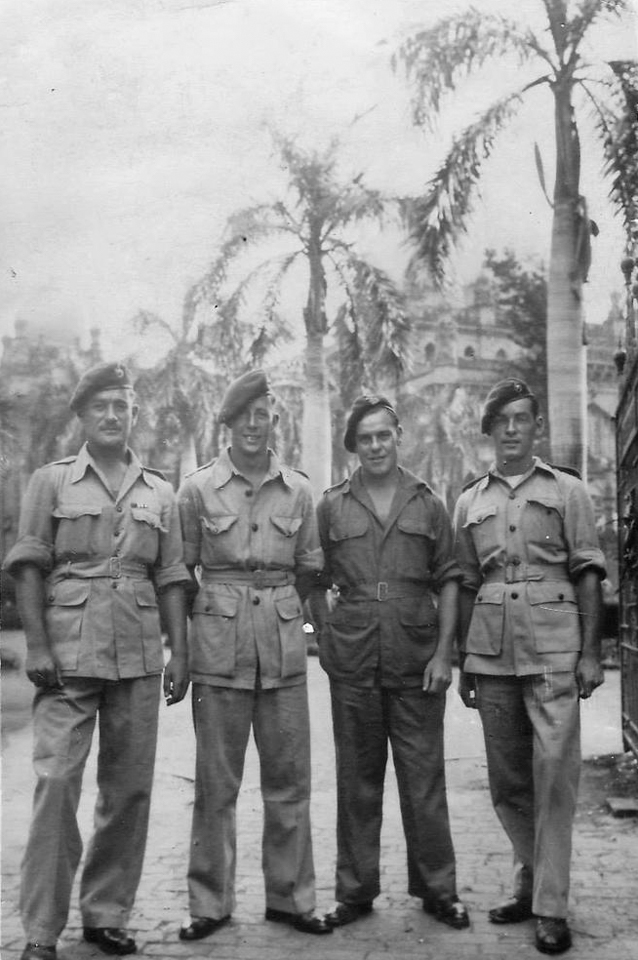
In the first months of 1942, the Japanese had launched attacks against British Burma to gain access to the oil, rubber and other raw materials the Japanese needed; and create a fortified perimeter around Japan. British defences were weak and by early March the capital Rangoon and its vital port had been lost. As the Japanese pushed northwards, the surviving British and Commonwealth troops carried out a fighting retreat across nearly 1,000 miles of awful terrain, losing most of their equipment and transport but saving most of the men.
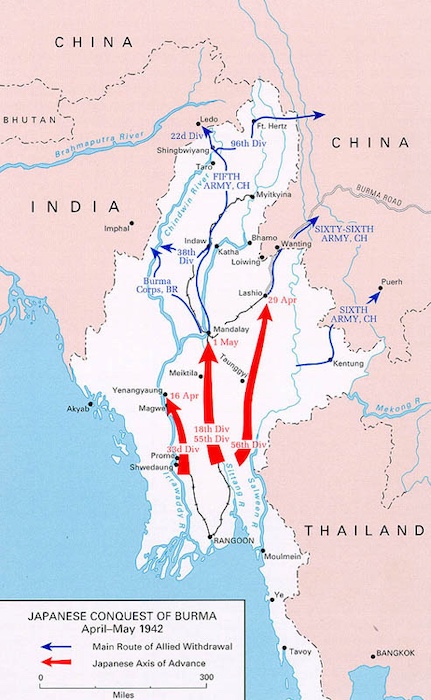
Without adequate resources, a major counter-offensive into Burma was out of the question for the foreseeable future. It was not until November 1943, when South East Asia Command (SEAC) was formed under Admiral Lord Louis Mountbatten, that a major offensive was planned to clear Japanese forces from northern Burma and drive them south.
Arakan and Operation Screwdriver
In late December Indian units launched an offensive in the Arakan (northwest Burma), prompting a Japanese counter-offensive. 5 and 44 Commandos thus returned to Bombay where they boarded the infantry landing ship HMS Keren on 22 February 1944 bound for Cox’s Bazar on the northeast coast of India, close to the Burmese border. They arrived on 5 March 1944 and set up their base at Nhila on the Teknaf peninsula. By this time the British and Indian units had managed to stop the Japanese counter-offensive and had themselves resumed offensive operations.
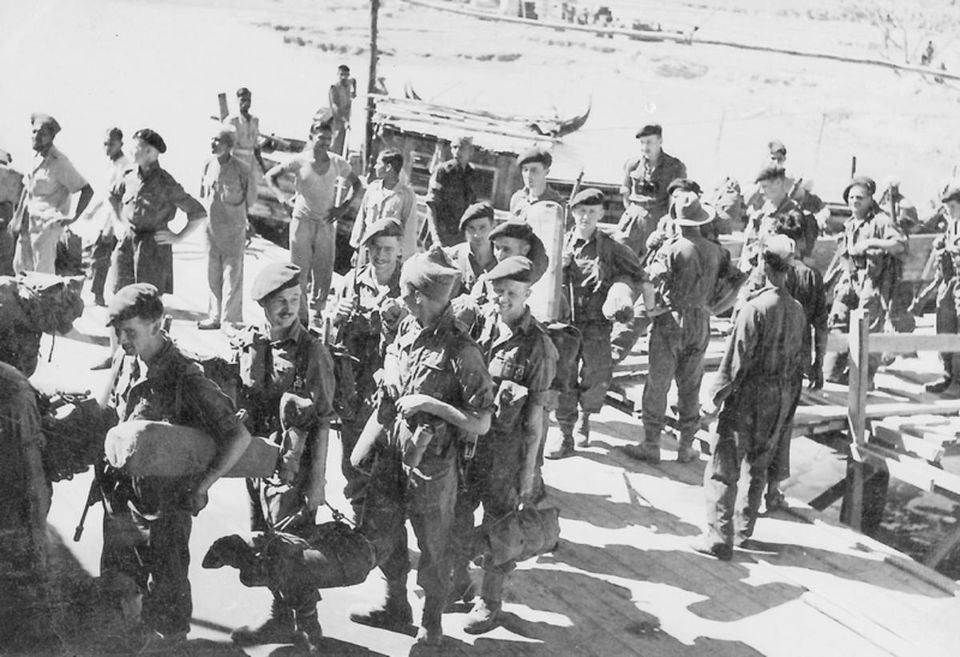
As the Indian XV Corps began to advance down the road linking Maungdaw and Buthidaung, Operation Screwdriver was conceived as a plan to land forces in the Japanese rear. Thus 44 Commando was landed from the sea at Alethangyaw on 11 March with the objective of capturing the town as the essential prerequisite for the rest of the Brigade to pass through it and advance into the surrounding hills to engage the Japanese. 5 Commando was to be landed at Ton Chaung on 14 March.
The landing was resisted fiercely by machine gun emplacements and sniper fire and for the next 48 hours 44 Commando was involved in a succession of running battles with the Japanese, while also undertaking a reconnaissance of the surrounding hills. The mission claimed 40-50 Japanese dead for the loss of four commandos.
44 Commando was then tasked with crossing of the Naf river by barge with the objective of raiding Nahkaungdo, Lambaguna and Hinthaya. The operation began on 21 March and was a success. Following several small skirmishes, the Japanese were forced to bring up reinforcements and the Commando was withdrawn to Maungdaw on 23 March.
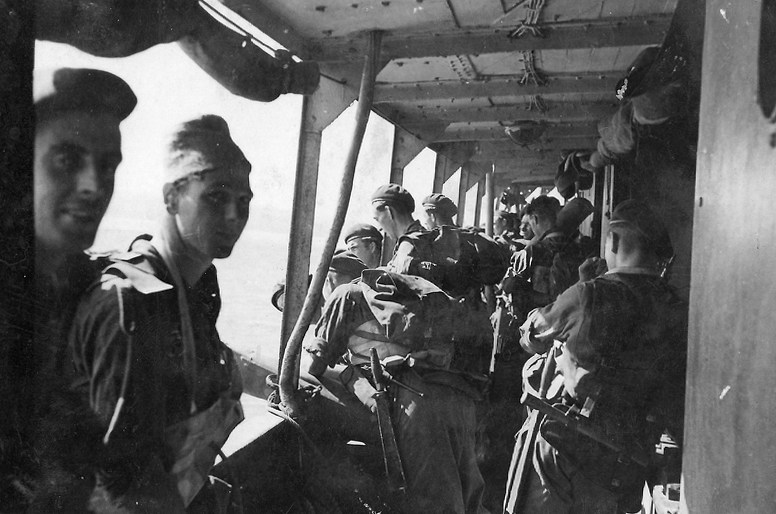
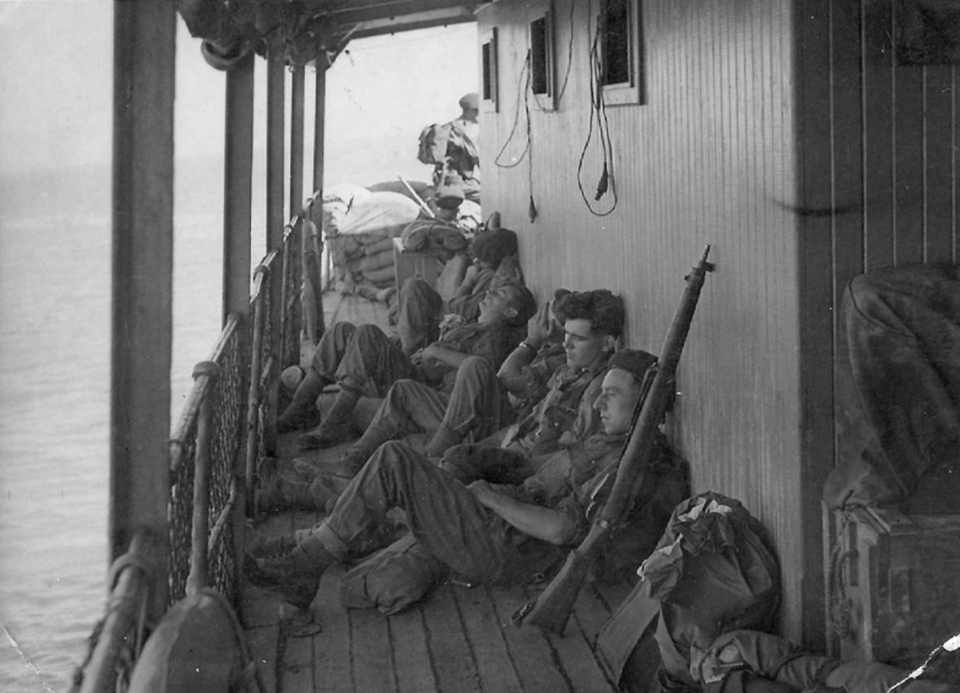
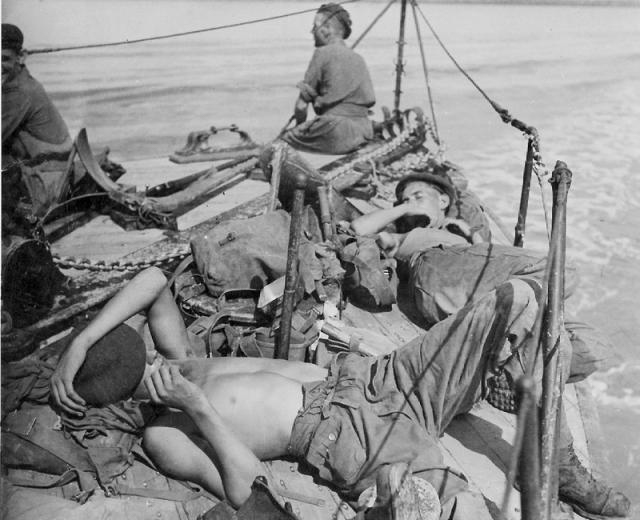
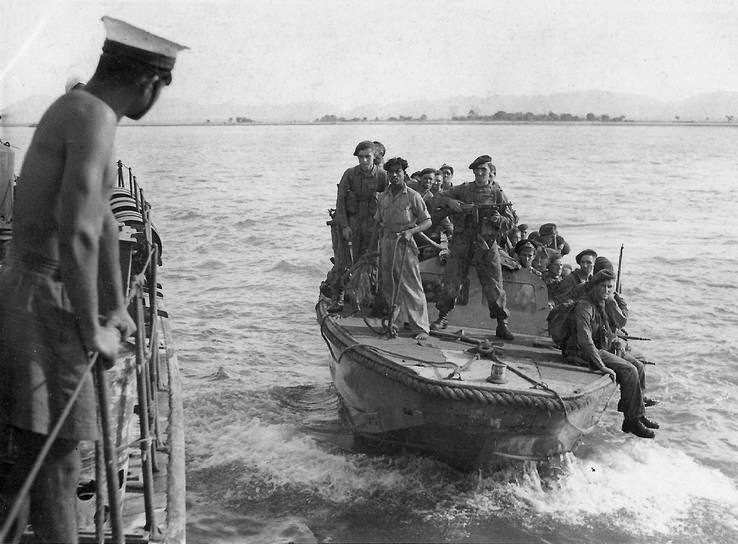
The Japanese Fifteenth Army then launched an offensive in northern Burma, which culminated in battles around the towns of Imphal and Kohima. 5 and 44 Commandos, who were engaged in routine patrol duties in and around the small port of Maungdaw, were hastily dispatched to Silchar, where they arrived on the 11 April. This was a vital communications junction, and patrols were undertaken in the Assam hills to monitor any enemy activity. The Commandos remained in this area until August 1944, when they returned by rail to Bangalore via Calcutta.
Operation Lightning
During September 1944, they were deployed to Trincomalee in Ceylon, where 1 and 42 Commandos rejoined the Brigade. Then they moved to Teknaf, via Calcutta and Chittagong, to prepare for further planned operations. By the end of December, the XV Indian Corps was ready to launch an offensive to push south through the Arakan to outflank the retreating Japanese 28th Army, blocking its route as it sought to escape via the many small rivers out to the sea.
Their first objective was to secure small island of Akyab which the Japanese had been using as an airbase. Plans were put in place to land 3 Commando Brigade with tank and artillery support, covered by a strong naval detachment and some 200 RAF aircraft. With the force was enroute, intelligence revealed that the Japanese had completely withdrawn and so at 9.45am on 3 January 1944, the troops were able to land on the beach unopposed. They marched to the small village of Doneyin where the men of 44 Commando spent some time patrolling the local area and exploring the abandoned Japanese defences at Fakir Point.
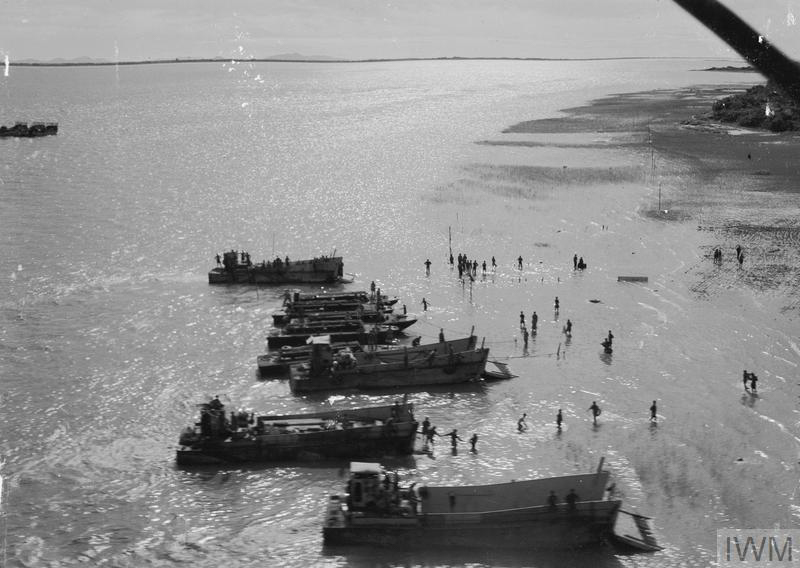
There, they received orders to prepare for the journey out to the Baronas, three small jungle covered islands to the southeast where they were cautiously welcomed by local villagers who had nothing to report about the Japanese but were deeply fearful of retribution. Returning to Akyab, 44 awaited the order to move out to their second objective, Myebon, and the beginning of ‘Operation Passport’ which would be a stark contrast to their experience on Akyab.
Capturing the Myebon Peninsula
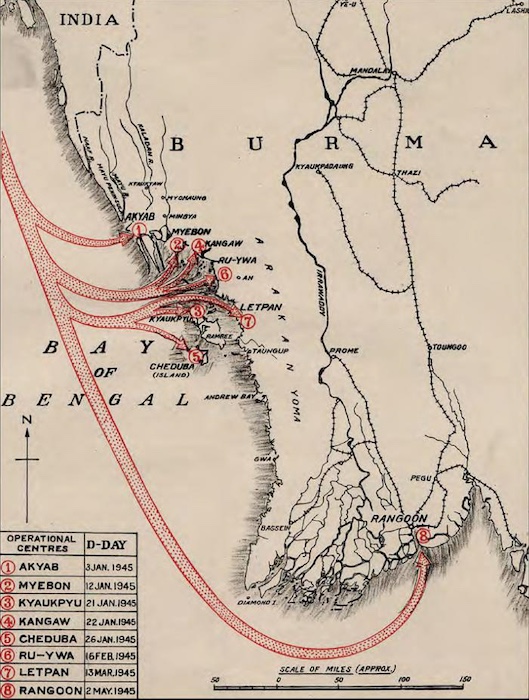
30 miles southeast of Akyab lays the narrow and extremely hilly Myebon Peninsula, sandwiched between two rivers and densely covered with jungle and bamboo. Capturing it was essential to gain control of the main waterways and deny the Japanese their escape route out to the sea. In addition, Myebon would provide a foothold on the Arakan to launch an attack on the key village of Kangaw.
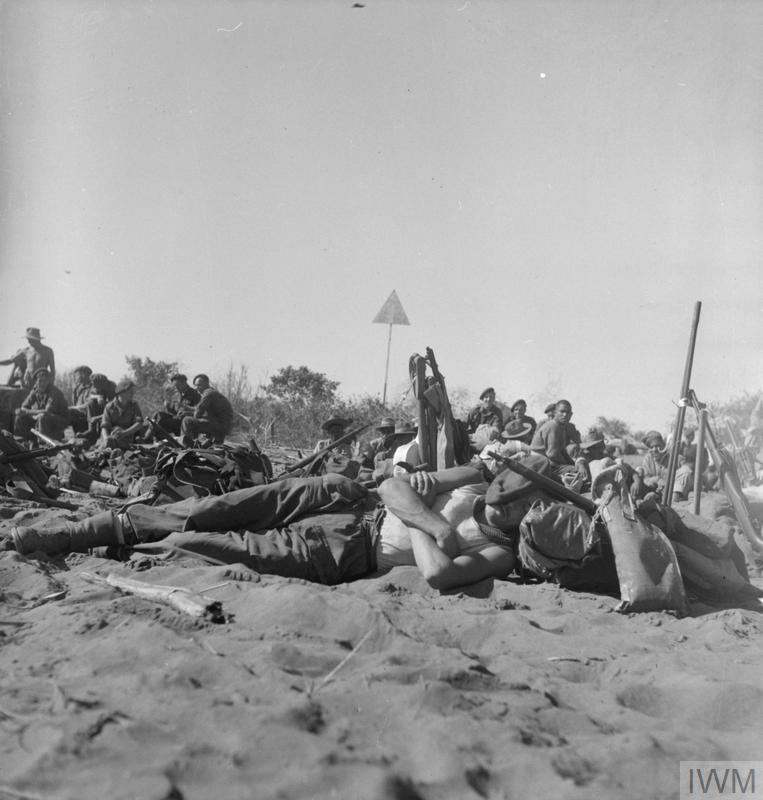
In the early morning of 12 January 1945, 3 Commando Brigade spearheaded an amphibious assault at the tip of the peninsula to secure Myebon village and its jetty. 42 Commando landed first and secured the beachhead for 5 Commando to follow. The second comprised 44 and 1 Commandos, but in the 3 hours that had passed the tides had changed. The men now stepped out of the landing craft much further away from the beach and had to wade through waist high mud that deprived them of their boots and socks. By the time that the exhausted men reached dry land they had lost most of their heavy equipment.
They waited overnight and at 10am the next day moved out towards Myebon village to support 42 Commando. The area was taken with no prisoners as the Japanese instead preferred to fight to the death. With the area clear, and Myebon village secured, the marines spent a cold and unpleasant night near the Myebon River.
From the 14-18 January, the Commandos continued to push north up the Myebon Peninsula towards Kantha. The advance took them through thick jungle tracks and mangrove swamps, with the ever-present threat of Japanese snipers alongside the effects of the torturous landscape and climate such as Malaria and Dengue fever. By 20 January, 3 Commando Brigade had secured the Myebon Peninsula and prepared for the next assault.
The Battle of Hill 170
The capture of the Myebon Peninsula severed the Japanese escape route to the sea. Their only option was now the Myohaung-Tamandu road through the village of Kangaw. It was here that the Allies planned to cut their last remaining escape route, but the threat was clear to the Japanese who prepared their defences. Artillery in the hills to the north and east made any attack by the main Allied force extremely hazardous.
3 Commando Brigade were given the task of spearheading another amphibious assault, but this time not from the sea, instead sailing up the muddy Daingbon Chaung mangrove swamps with the objective of clearing three heavily defended hills codenamed ‘Pinner’, ‘Milford’ and ‘Brighton’ – collectively known as Hill 170.
On the 22 January a 50-vessel convoy headed up the Daingbon Chaung and at 12.45 landed 1 Commando under enemy shelling, wading through the tangle of submerged mangrove roots. They made an immediate and aggressive attack on Hill 170 and were soon followed by 5 and 42 Commandos. George’s 44 Commando landed at around 3pm on the southern side of the hill.
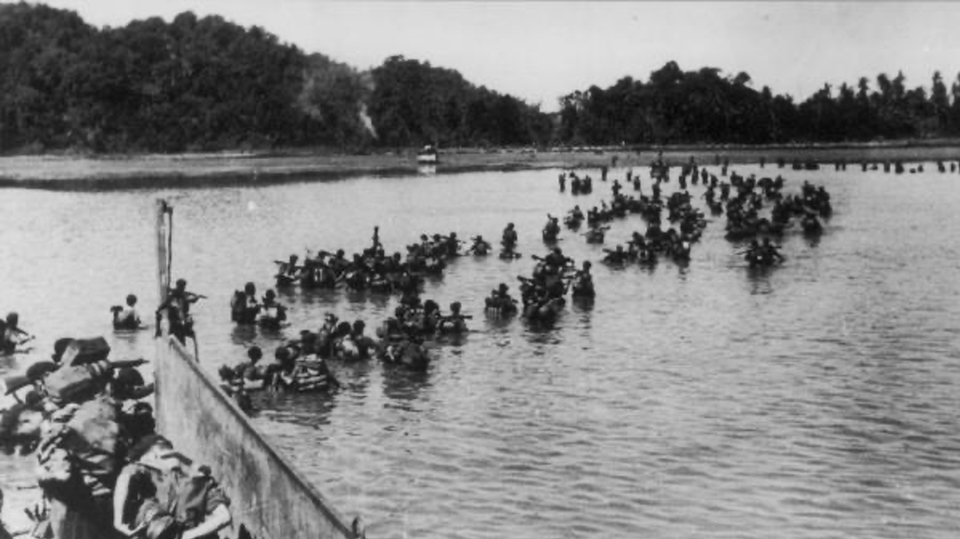
That night they captured ‘Milford’ unopposed, meanwhile the other commandos repulsed two counterattacks. Shortly after daybreak on the 23rd, 44 Commando advanced to the next objective, a steep jungle covered hill known as ‘Pinner’, and again found no enemy present. However, the Japanese had been carefully following their positions and at 10pm artillery ranged in on them causing several casualties. The Japanese then advanced from the Kangaw Road and launched a vicious counterattack. Machine gun fire swept the forward trenches and artillery blasted at point blank range. The infantry hit quickly, advancing across terrain that they knew well. There was fierce hand to hand fighting before the attack was repelled, only to be repeated relentlessly throughout the night. After one last attack, a voice called out ‘We’ll be back in the morning’ and at 3am on the 24th, silence returned. 44 Commando was relieved two days later and returned to Diangbon. They had lost 27 dead and 60 wounded.
The plan was for the rest of 3 Commando Brigade to withdraw on 30 January, but the plans were halted by a new Japanese counterattack. At 6am on 31 January the artillery barrage reached ferocious intensity as the Japanese threw themselves forward. In a day of continuous fighting, much of it hand-to-hand, the Brigade stood firm in the face of relentless waves of enemy troops. When the Japanese finally withdrew that night, they left behind 350 dead, while 3 Commando Brigade lost 45 dead and 90 wounded.
The commandos’ victory cut off the escape route, and further Allied advances made the Japanese position in the Arakan untenable, and they ordered a general withdrawal.
The end of the war
The Brigade then moved to Akyab and then to Madras, where all were given leave. They then began preparations at Karakvasla for the invasion of Malaya (Operation Zipper) but this was cancelled when the war in the Far East ended and it turned into a re-occupation operation.
George returned home during December 1945 and was soon discharged.
Units
- Mobile Naval Base Defence Organisation No. 1 (1940-1941)
- Mobile Naval Base Defence Organisation No. 2 (1941-1943)
- Royal Marine Division (1943)
- 44 (Royal Marine) Commando (1943)
Medals




